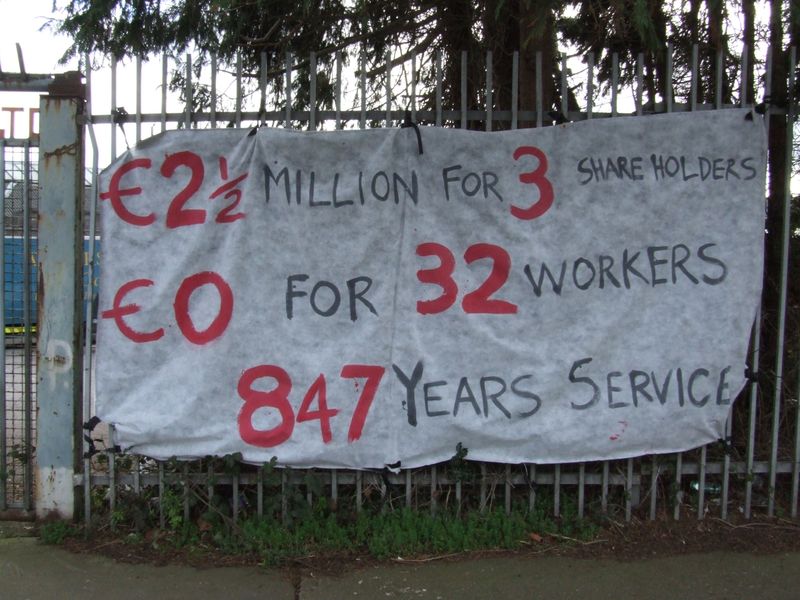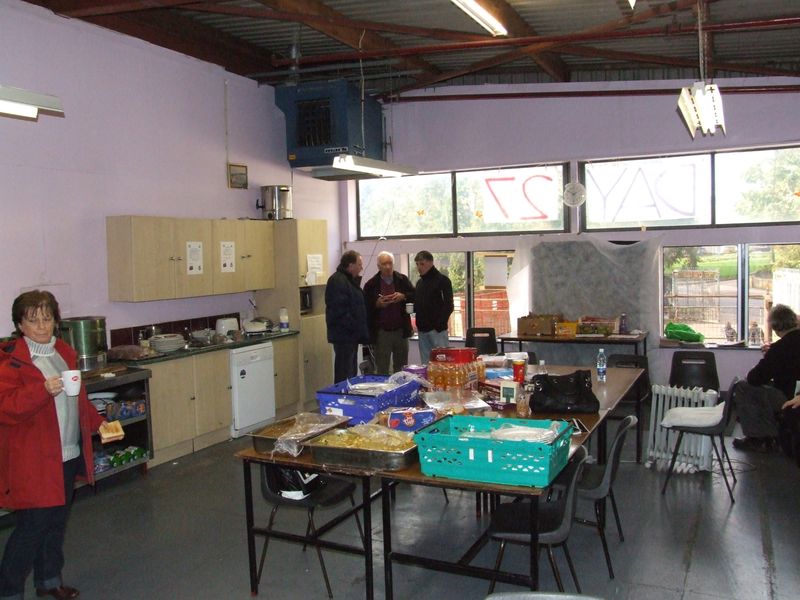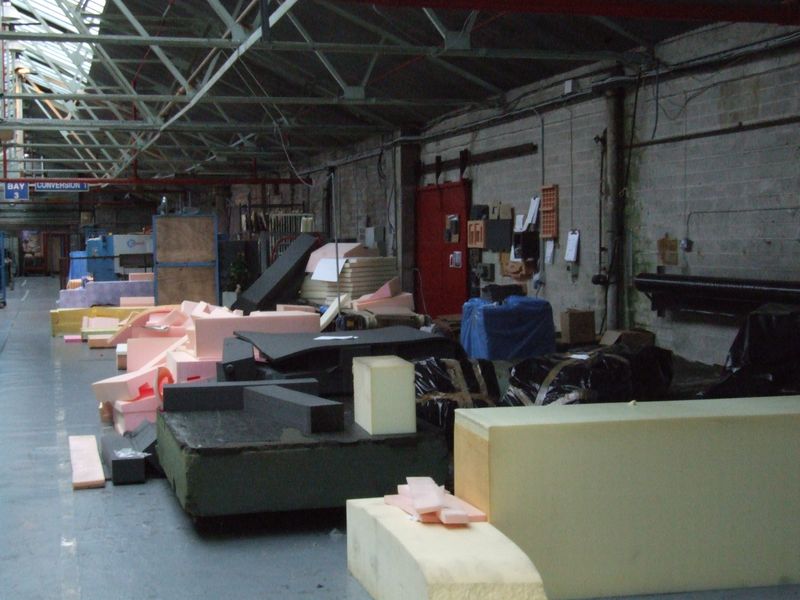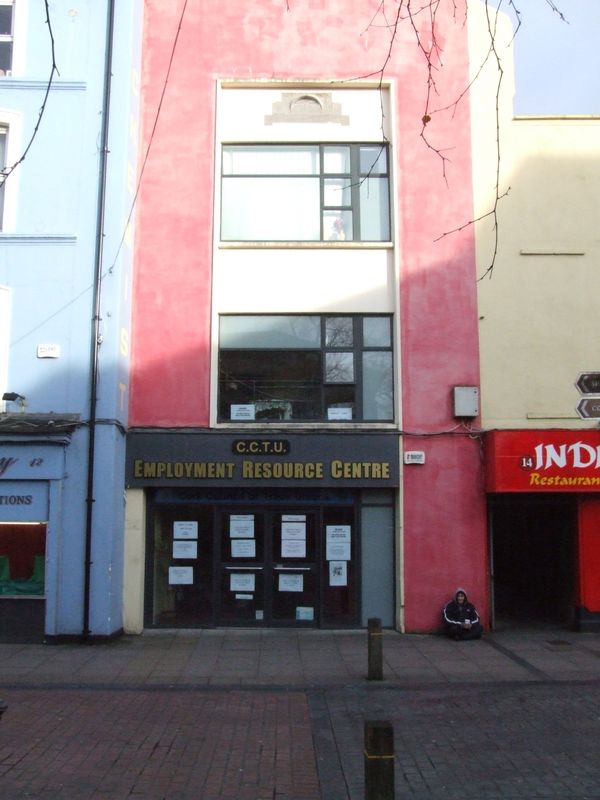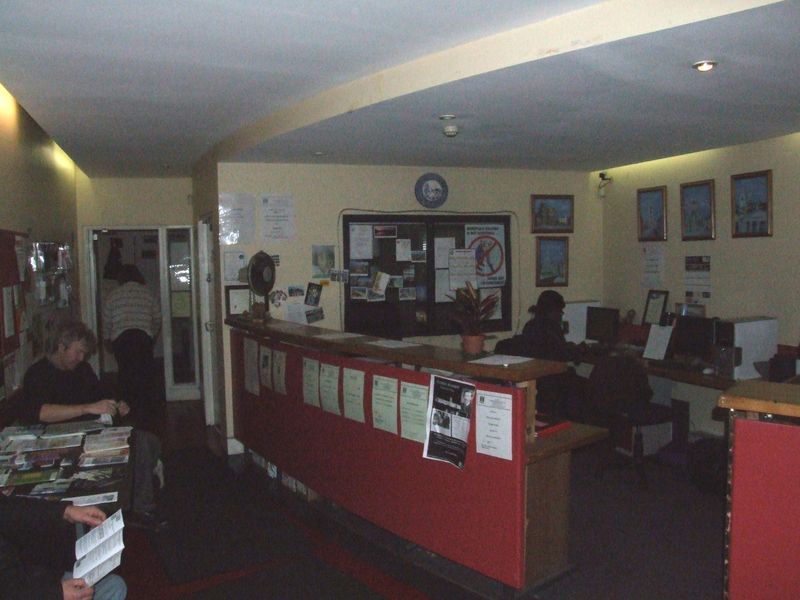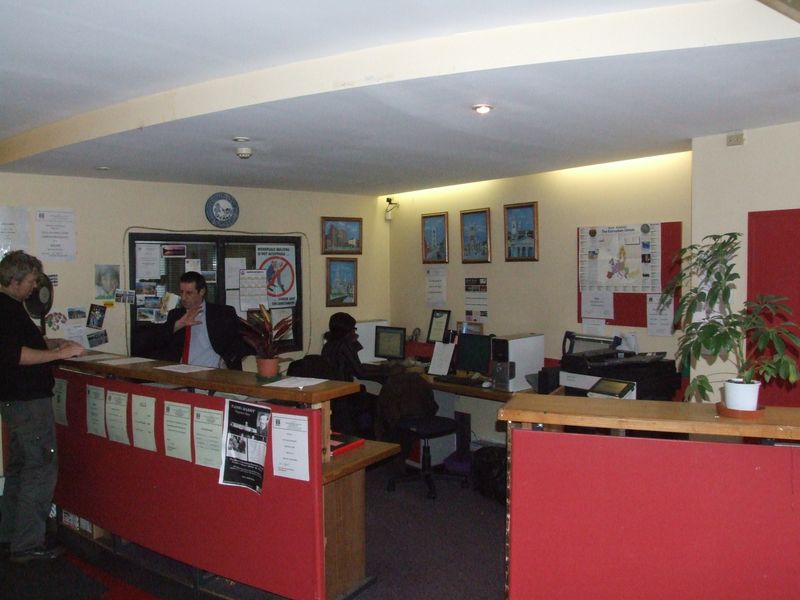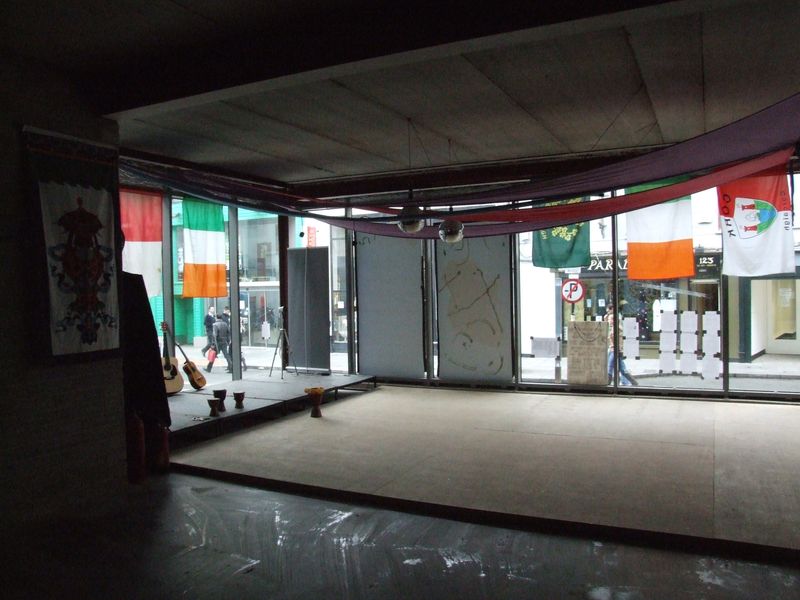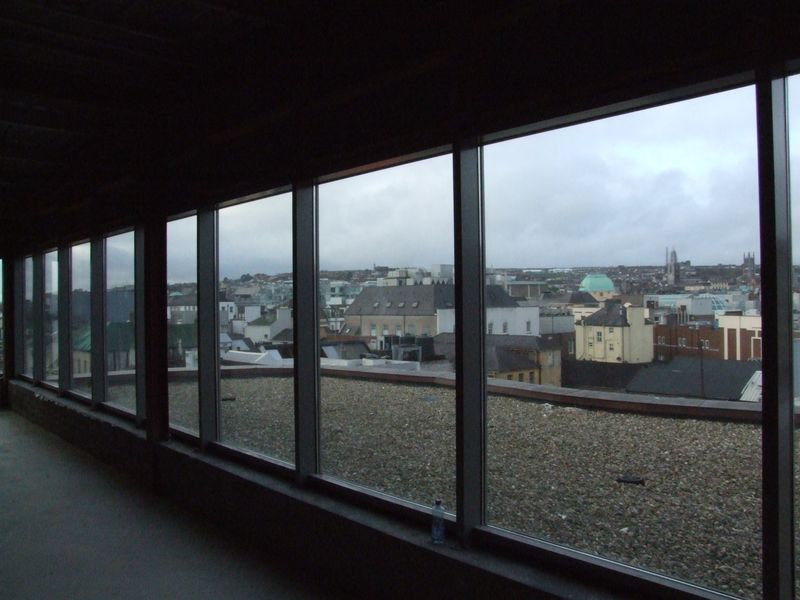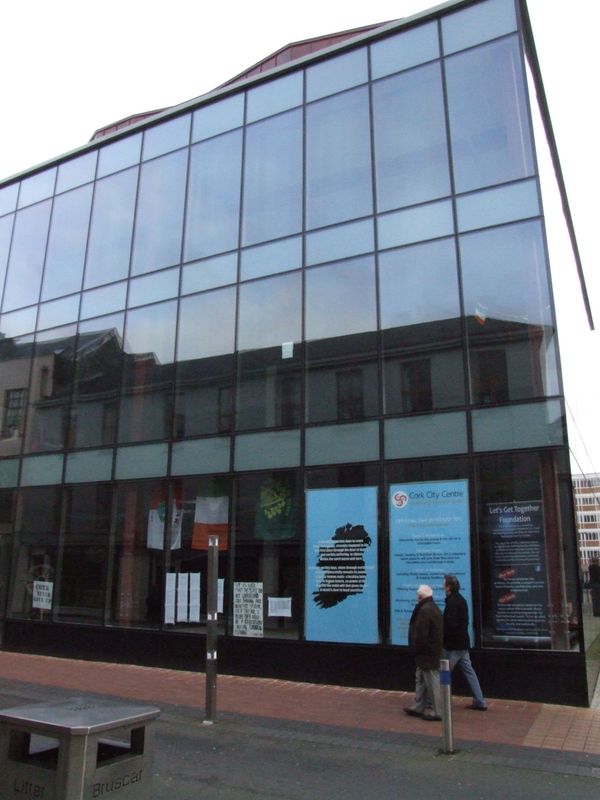Over 30 years of anarchist writing from Ireland listed under hundreds of topics
CCTU Unemployed Centre, Vita Cortex and a NAMA building - Cork's three occupations
Three occupations in Cork highlight the ideas of direct action, self-organisation and solidarity
At a time when Ireland's rich class and their government are relying on passivity and apathy from the country's working class to push through their austerity agenda with the minimum of resistance, the presence of three separate occupations of workplaces and vacant NAMA commercial property in Cork is a hopeful sign that 'the powers that be' are not going to have it all their own way, as they attempt to make everyone else pick up the tab for the economic carnage their actions have unleashed upon this society. Although each occupation is separate and different in origin and potential outcome, each one shows that people do understand the necessity and the effectiveness of direct action in this time when bosses and property owners are trying every trick in the book to slough off their debts and evade public accountability while doing so.
The occupations vary between being defensive and offensive in outlook. The Vita Cortex occupation is straightforwardly a defensive one, intended to make runaway employer Jack Ronan pay the redundancy money he owes to the workers there. The occupation at the CCTU Unemployed Centre started in a similarly defensive manner, but it has become the spur for the Centre's friends and users to begin organising to take over its running and funding, which is a direct challenge to the state agency FÁS and the Cork Council of Trade Unions. The occupation of the NAMA property in Cork city centre is a very visible challenge to the state, which intends to keep millions of square metres of usable buildings empty and idle, because the state values those buildings solely as property, and not for the potential such places could offer to communities as centres for education, training, learning, sharing and healing and so much more.
VITA CORTEX
Wednesday 11th January, it's the 27th day of the sit in by 32 workers of Vita Cortex. The day shift are in the canteen, the table is covered in food donated by sympathisers, two young lads from the Socialist Party are interviewing one worker, and when we leave the photographer from the Evening Echo arrives. The workers' cause has widespread support in Cork city and beyond, it regularly makes the front page of the local evening paper The Echo and the local freesheets. The workers have been visited by everyone from local GAA legend Jimmy Barry-Murphy to ICTU president Jack O'Connor, and they have the support of every one of the local TDs. Made redundant by the company, they are in limbo with no redundancy payments forthcoming for a combined service of 847 years. The company belongs to Jack Ronan who has a string of other companies and assets (including a 300 acre stud farm, according to the Sunday Times), all neatly ring-fenced by company law from liability with reference to Vita Cortex in Cork.
Herein lies the problem - the law favours capital over labour. The very laws many of the supporters of the workers are pledged to uphold are the very instruments being used to protect the owners from their liabilities. But the workers have bypassed the neat rules of the game by occupying the factory and preventing any more materials or equipment leaving, taking direct action to protect their rights and force the issue into a bigger arena. The treatment of the workers is patently unjust so choosing sides is straight forward for anyone with any semblance of right and wrong. The workers have the people on their side. We spoke to Catherine McCabe who seemed genuinely overwhelmed and uplifted by the level of solidarity and support that she and her fellow workers are receiving. "The solidarity is very strong it really helps you get through the day. I've never been involved in anything like this before, it's great how people are supporting us." On today 12th January, the workers travelled to Dublin with friends and family to take their case to the Dáil. On Saturday, a march in support of the workers is being organised in Cork by the Cork Council of Trade Unions.
The case of these workers is of vital importance of course, for we have seen and will see many more factories and businesses fold as the recession bites deeper. Trade unionists are concious of this, for what is at stake is not just the fate of these workers but every other worker who might find themselves in similar situations in the future. Today comes with the news that the employers have finally agreed to meet with the workers. Public and union pressure has been mounting - someone is looking for a way out.
The lessons for every worker of this struggle, though not over, are already being noted.
1. You've got to be organised. So join a union and get your fellow workers in too.
2. Direct action gets results. Take measures into your own hands when under attack.
3. Solidarity is strength. Rally others to your cause and rally to other workers' causes. As the workers' banner proclaims on the fence of Vita Cortex, "an injustice to one is an injustice to everyone".
THE UNEMPLOYED CENTRE
There is a buzz of activity in Cork's Employment Resource Centre as we enter. Cork has had a centre for the unemployed since 1988. Started by the Cork Council of Trade Unions, it moved around many different locations until finally settling into this building in North Main St. Purpose-built and owned by the city council, it has been here ever since. Education, information and rights advocacy for the unemployed are provided through the centre as well as a canteen where you can get a cup of tea and have a chat. The centre is a vital resource for a city and county with 40,000 plus unemployed. Like most facilities of this nature, funding from FÁS became the key to paying staff and providing services. According to manager Willy Fitzpatrick the behaviour of FÁS over the past year would indicate they simply want to withdraw funding and see the place close. There was a string of meetings and proposals over the last year, with numerous recommendations from FAS for implementation. In February 2011, FÁS issued sixty six recommendations for implementation by May, then made further demands and requests culminating in a three-day session of meetings in December when FÁS finally pulled the plug, rejecting proposals put forward by both the CCTU and the centre and refusing to put any funding up for schemes in 2012. The Centre announced its closure.
However in January the staff reopened the centre. Supporting them is a group formed in April of 2011, established to keep the centre open as they feared the longterm plan was to shut it down. Over 130 people are part of the friends of the centre, whose steering group is tasked with keeping the centre functioning. In early January the doors were reopened by the staff who simply refused to close the centre, the hope is that the centre can be directly funded by trade union members. In pursuit of this a proposal was put to the CCTU asking for
1. a list of shop stewards in the city so that they could be directly approached to organise aid,
2. a letter of approval from the CCTU as a introduction for such purpose, and
3. An injection of funds to keep the centre running for four months while the new funding method was put in place. On the day we arrived to do the interview news had arrived that these requests were rejected. They aren't beaten yet though, and through volunteers and a few plans on the boil they intend to make the centre viable. Watch this space for further developments.
OCCUPIED NAMA BUILDING
On Christmas Day 2011, a group of people who were part of the Occupy camp in Cork took possession of a building on Cork's Oliver Plunkett Street. The keys had been "left under a Christmas tree" with a note at the camp. The building is impressive - 7 storeys, 5 above and 2 below ground. Essentially it is incomplete with no internal fittings, something the Cork Community Resource Centre intend to remedy. The project is in it's formative stage. Finbarr guided us through the building and talked about the vision and ambition of the project. In terms of structure, the plan is to establish a membership-based co-op who would choose a board to run the centre and evaluate individual proposals from groups who wish to use parts of the building. Currently, the ground floor is envisaged as a library/bookshop/cafe, the first floor as a space for the exchange of ideas and information, for education and contemplation, the next floor up for a suicide prevention charity and other groups who are interested in a space, and the top floor (which has a spectacular view of the city) they hope to see become a recording studio/local TV and radio station. To make these ambitions real there will be a need for a huge commitment of voluntary labour and some finance. The space is looking for people with electrical, plumbing and other skill sets to come forward. They are looking for donations of office furniture, etc. also.
A lot will hinge on what happens on the legal front. If the group can stabilise in legal terms their possession of the building the projects would become far more realisable; if not then defence of the building from anyone seeking to remove them might come to dominate considerations. Whatever happens however, by taking this building this group have sent out a challenge to the state over the disgraceful situation where thousands of buidings lie empty across the country and many, many worthy and vital projects are unable to access affordable space. If these buildings were made available to communities, voluntary organisations, musicians etc., it could have nothing but positive effects.
A huge strength of the Occupy movement is its commitment to democratic organising, the general assembly model though slow and often cumbersome ensured that everyone felt ownership of the project. It will be interesting to see if that model of organising and decision-making can co-exist or form part of the model being proposed by the centre. The Occupy movement has unleashed a lot of energy and provided a platform for people to take on and pursue genuine projects for social change, and its effects will be felt for a long time yet.
Words: James McBarron. Photos: Ray Hanrahan


